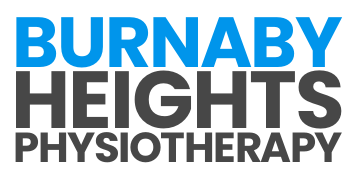Transform Your Health with Pelvic Floor Physiotherapy for Interstitial Cystitis
October 27, 2025Why You Should Consider IMS Therapy for Your Recovery
October 27, 2025Pelvic floor physiotherapy in Burnaby, BC for incontinence can be a transformative solution if you are experiencing unwanted leaks or finding it difficult to maintain bladder control. By focusing on exercises and strategies that target your pelvic floor muscles, you can regain confidence and comfort in your daily routine. Below, you will find a clear overview of why this approach works, what to expect, and how to make the most of each session.
Understand the Basics of Incontinence
Incontinence often feels like a big hurdle. You may notice sudden leaks when you sneeze, laugh, or lift heavy objects. Sometimes, you might feel a strong and urgent need to use the bathroom. Many factors can trigger these moments, including aging, childbirth, or surgery. However, incontinence does not mean you must accept constant interruptions in your day. By recognizing how your pelvic floor muscles play a key role in bladder control, you will see how proper guidance can help you retrain these muscles for long-term benefits.
Discover How Physiotherapy Helps
Pelvic floor physiotherapy focuses on strengthening and relaxing the muscles that support your bladder and urethra. When these muscles are conditioned, they are better at maintaining control and managing pressure changes in your abdomen. A physiotherapist will guide you through exercises such as:
- Gentle kegels to increase muscle endurance
- Breathing techniques that align your pelvic floor with core stability
- Targeted stretches that reduce tension or discomfort
This hands-on approach is personal, allowing you to address the specific conditions causing your incontinence. If you also struggle with additional issues like urinary urgency, you might consider exploring pelvic floor physiotherapy for urinary urgency to complement your progress.
Know What to Expect in a Session
Your first session typically begins with a thorough assessment of your medical history and current symptoms. You may need to describe when leaks happen and how often. Then, your physiotherapist might check how well you are engaging your pelvic muscles. By identifying weak spots or areas of tension, your therapist can suggest the most effective exercises. Eventually, you will move on to guided practice. Over time, you will learn how to integrate these exercises into your daily routine for continuous improvement.
If you have recently given birth, you may also benefit from pelvic floor physiotherapy postpartum, which addresses incontinence and helps your body recover more comfortably after delivery.
Practice Positive Habits at Home
Much of your progress hinges on daily habits and commitment. Simple changes can amplify the gains you achieve during physiotherapy sessions. You might:
- Stay Hydrated – Proper hydration can reduce bladder irritation.
- Track Your Progress – Using a journal to note improvements helps you spot patterns and stay motivated.
- Avoid Straining – During bowel movements, try to relax and let your muscles work naturally. If you experience constipation, pelvic floor physiotherapy for constipation might offer additional relief.
- Incorporate Exercises – Short breaks for pelvic floor exercises throughout the day keep results on track.
Take Steps Toward Relief
Pelvic floor physiotherapy for incontinence offers a supportive path forward, helping you address leaks and inconsistencies at their root. By working closely with a knowledgeable physiotherapist, you will receive tailored exercises and practical strategies for lasting change. People of all ages and backgrounds have found that this approach strengthens not just their bladder control, but also their overall confidence.
If you feel ready to regain control of your everyday life, schedule a session with a pelvic floor physiotherapist. Local experts can assess your needs, guide you through proper exercises, and cheer you on as you make steady progress. You deserve relief that fits into your lifestyle, and pelvic floor physiotherapy can help you get there.


